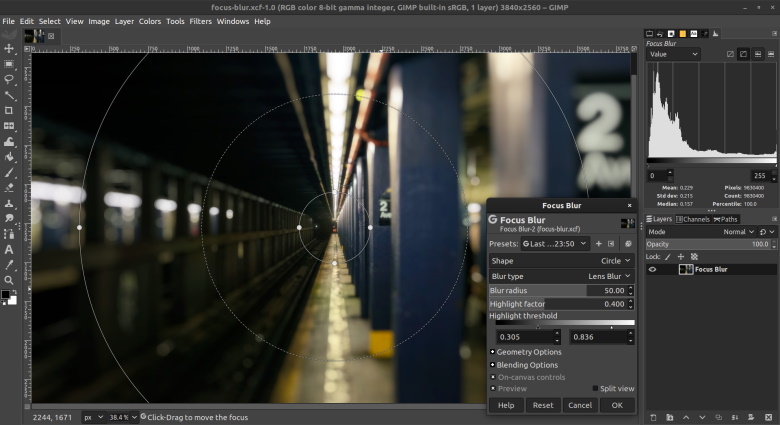

(gimp-image-delete image))) Defining the script variables (gimp-file-save RUN-NONINTERACTIVE image drawable new-filename new-filename) (plug-in-randomize-hurl RUN-NONINTERACTIVE image drawable percentage 1 TRUE 0) (plug-in-spread RUN-NONINTERACTIVE image drawable spread-amount spread-amount) (gimp-edit-bucket-fill drawable BUCKET-FILL-FG LAYER-MODE-NORMAL 100 255 TRUE 0 0) (gimp-image-select-color image CHANNEL-OP-REPLACE drawable '(0 0 0)) (new-filename (string-append "modified_" filename))) (drawable (car (gimp-image-get-active-layer image))) (let* ((image (car (gimp-file-load RUN-NONINTERACTIVE filename filename))) Inside the chalk.scm file, write your first script with: (define (chalk filename grow-pixels spread-amount percentage) In my case, it is at $HOME/.config/GIMP/2.10/scripts. Writing your first scriptĬreate a file called chalk.scm and save it to the scripts folder found in the Preferences window under Folders → Scripts. Normally when you start GIMP, it loads its graphical user interface (GUI), but you can disable that with the -i option. The -b option's argument can be the script you want to run or a dash ( -) that makes GIMP launch in an interactive mode instead of the command line. You can run GIMP with batch mode enabled by using the -b option. GIMP Procedure Browser (Cristiano Fontana, CC BY-SA 4.0) Accessing GIMP's batch mode

In the Help menu, there is a Procedure Browser with very extensive and detailed documentation about all the possible functions.
#Gimp define full
It took me a while to find the documentation for the full list of GIMP's functions, but it was actually straightforward. ↳ Returns a list containing 1, 2, 3, and 5 Functions and operators are applied to a list of operands by prefixing them: (function-name operand operand. Scheme is a Lisp-like language, so a major characteristic is that it uses a prefix notation and a lot of parentheses. To help you get acquainted with Scheme, GIMP's documentation offers an in-depth tutorial. You can also write scripts in Python, but Script-Fu is the default option. I think Script-Fu is a great way to start because it has an immediate effect on image processing, so you can feel productive very quickly. If you have never used Scheme, give it a try, as it can be very useful. It is an implementation of the Scheme programming language. Script-Fu is the scripting language built into GIMP. This was the perfect chance to explore them. Although I have been using it for years, I had never investigated its batch-processing abilities nor its Script-Fu menu. GIMP is a great open source image editor. eBook: An introduction to programming with Bash.Try for free: Red Hat Learning Subscription.


 0 kommentar(er)
0 kommentar(er)
